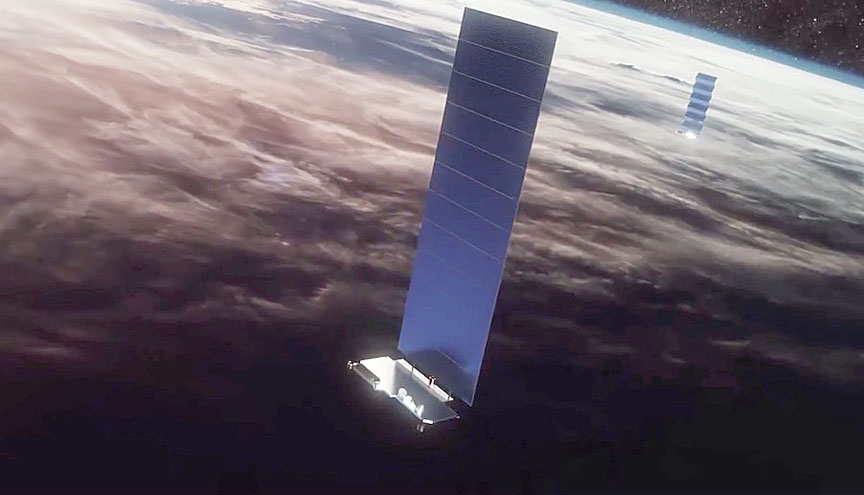Within three months of the availability of Starlink satellite internet connection, there were 10,000 users. That was when the service was available only in the US. On April 7th, last week SpaceX confirmed the launch of 60 Starlink satellites. In addition to the previous 23 launches on internet satellites, these 60 satellites will be their 10th mission this year.
Deployment of 60 Starlink satellites confirmed, completing SpaceX’s 10th mission this year pic.twitter.com/c15BveB3QE
— SpaceX (@SpaceX) April 7, 2021
Starlink launch
The video was available live on SpaceX’s official website. It was a three -four minute video of the Falcon Rocket being released into the air. During the live telecast, a SpaceX engineer announced the launch as,
“Falcon 9 has successfully lifted off from Cape Canaveral Space Force Station carrying our stack of Starlink satellites to orbit.”
SpaceX has permission to launch around 30,000 internet satellites and they are currently close to 1,440.
Services provided
The no-tired pricing system from Starlink services got many interested in the company. However, the company currently has its own challenges, meaning there is more work to be done.
As the purpose of Starlink is to provide internet services in the more remotest areas, the standard price is understandable. With a monthly bill of $99, every citizen of rural areas in the US can now use Starlink’s internet. If there is a problem with the device, the company assures that the buyers will get a replacement no matter where they are (in America).
SpaceX is yet to provide its services in rural areas for other countries. Starlink is not the solo player here, there are OneWeb, Amazon, and Telesat. In fact, OneWeb has already launched 36 satellites prior to Tesla’s availability in other countries.

Plausible collision of satellites
Yesterday, as The Verge reported, the two competitive companies would have had their satellites collied if not for the close gap. OneWeb launched its 36 satellites on 30th March. Then, just a couple of days after the launch, the company received many plausible collision warnings from the US Space Force.
As per the reports, they came as close as 190 feet, which is considered to have a very good chance for a collision to happen.
The two teams will have to coordinate well, for the future safety of their satellites. However, looking deep into the issue, for some reason SpaceX had their collision avoidance system OFF. Supposedly, that was the reason behind the two satellites passing through such close proximity.
The further details on the issue are unclear. In addition to such minor incidents, there is the concern of the quality of internet provided by them. The reviews are yet to come by the current users in the US and Canada. SpaceX has been transparent all along, and there are many questions yet to be answered.





